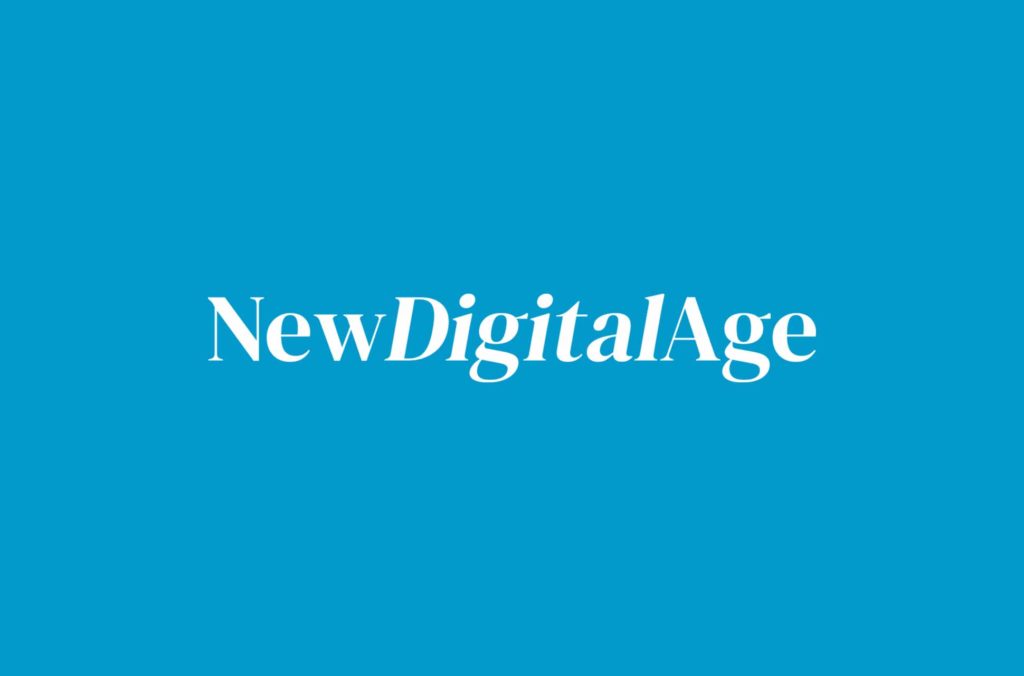Total UK marketing budget growth is at its strongest since Q2 2022, despite achallenging economic environment, according to the latest IAB Bellwether Report.
NDA gathered reactions to the report from marketing experts across the industry. Here’s what they had to say about the new research:
Elizabeth Brennan, GM for advertisers at Permutive
“It is great to see that marketing spend by brands has increased, despite there being a wider concern for future economic uncertainty moving forward. The optimism being seen across the industry is a great sign of what we can expect to see in the next quarter. Brands must use these budget increases to maximise the quality of the audiences they are appealing to.
“This is the time to consider how relationships with premium publishers can help with this. The privacy-compliant data that publishers can provide will give brands access to audience interests, behaviours and trends, as well as what they are engaging with online, all without compromising consumer privacy. If they commit to this strategy, advertisers can capitalise on campaign success, which is vital in this economic climate.”
Naomi Gould, Data Science Consultant Manager at LiveRamp
“The latest IPA Bellwether report is a much-needed optimistic outlook. Unlike during previous times of crisis where businesses paused marketing spend, there is now a realisation that marketers must still invest in their brand activity to ensure value perception isn’t compromised, especially as we move into recovery. What will be important however, is that marketers have the right measurement tools in place to truly understand how their campaigns are performing and ultimately providing the best performance and incremental impact.
“Measurements like econometrics are important to understand and track media spend on each channel, but with consumer behaviour in more flux than ever, marketers need to rebalance these models to take into account inflation effects we’ve not seen in 40 years. Now, marketers also need granular data to really understand why they are behaving that way. This high-level view should be coupled with data on a campaign level to create a hybrid model of econometrics and data insights for better strategy, optimisation and ultimately performance. By collaborating with the right data partners in a privacy-centric way, marketers will be able to see a 360-view of their audiences to ensure their budgets are being spent most effectively.”
Matt White, VP EMEA at Quantcast
“It has undoubtedly been a difficult few months, although another quarter of growth in advertising spend shows that things aren’t as bad as expected for UK businesses. Employment figures are still looking strong, allowing consumers to continue spending. Holiday purchases and long haul flights in particular have proven popular, likely making up for what hasn’t been possible over the past couple of years.
“We’ve seen a degree of normalisation in consumer patterns of behaviour and a realignment of growth as people are returning to brick-and-mortar establishments and hospitality continues to rally. Hybrid living has had a clear impact on consumer habits too, with the CTV market continuing to grow in the UK, while linear TV declines, all alongside a continuous boom for audio and digital as a whole.
“Looking ahead to the rest of 2023 should give marketers reason to be hopeful for continued growth. Next month will see brands investing heavily in marketing around the King’s coronation, and there will undoubtedly be a spike in activity for the Rugby World Cup towards the end of 2023 as well. Despite the current landscape, there’s plenty of reason for marketing teams to remain positive.”
Tim Geenen, Co-founder and CEO at Rayn
“What stands out for me in the latest IPA Bellwether report is that technology was considered a key opportunity, particularly with regards to marketing strategies. It signals positive investment intentions in this space over the next 12 months, which couldn’t come at a more important time.
“Conversations around AI have excelled lately, sparking debate around innovation, regulation and fear about replacing human efforts. These can overshadow the potential the technology can truly have in helping brands achieve return on their investment and bring more value and convenience to consumers. The positives should outweigh the negatives, so it’s promising to read that marketers are realising the opportunities technology can present in supporting business growth, especially at this crucial time.”
Natasha Banjo, Director of Operations at News Live (News UK’s Events Team)
“While some budgets have decreased, it is excellent to see that event spending has increased for the fifth consecutive quarter, as marketing executives look to re-engage with new and prospective clients face-to-face. From our own experience, we’ve seen this is pertinent for B2B events as advertisers are wanting to deliver more innovative and relevant events that are closely aligned with what’s going on in the world today.
“With 14.5% of companies expecting events marketing spend to rise in 2023/4, the opportunities for advertisers are ripe. However, to succeed, they need to ensure their events are aligned with their brand messaging and audience interest to be able to deliver authentic and creative experiences. Even more so, with budgets being constantly scrutinised, it will be imperative to collect as much data as possible to get that all important insight into how successful an event was.”
Sarah Sanderson, Managing Director, TGI at Kantar Media
“These are positive signals from the industry around marketing spend. We know the way people consume media is ever changing, but online marketing continues to play an increasingly important role as it evolves and adapts to new trends and cultural shifts. For instance, nearly a third of people watching television search online for things they’ve seen advertised there – it shows that not only does making a splash matter for brands, but also the importance of having a strong online presence to back it up. Marketers are becoming more and more alert to the need to build campaigns that adapt to evolving behaviours and consumption patterns. There’s still more to learn though, as contrary to spending intentions, we’ve seen out of home advertising become a growing channel for advertisers to improve brand perception with consumers in recent years.”
Paul Coggins, CEO and Co-Founder at Adludio
“After so much post-pandemic doom and gloom, the fact that advertising has recorded its strongest expansion since Q1 2022 indicates that marketers are, at last, preparing for the bounce back. Nevertheless, with only the true innovators in adtech in hiring mode, it is clearly still tough out there, and the worst thing marketers can do right now is think they are out of the woods.
“In order to maximise the opportunity of this recovery, marketers need to use this time effectively. In particular, focusing on optimising the attention that their campaigns receive. This is especially pertinent on digital channels where there is fierce competition as brands in all industries look to win consumer hearts and minds. Those that truly understand the relationship between their creative, and the levels of consumer attention that this can sustain, will be the ones that prosper. More than this, brands will need to understand in detail exactly how, where and when users are engaging with their ads, so they can make more informed decisions to increase engagement.
“Marketers that prepare their ad stack now, focusing on delivering exceptional value, brilliant creative and innovative technology, including AI, will best prepare themselves for the economic rebound.”
Maor Sadra, CEO and Founder at INCRMNTAL
“Despite the downbeat economy meaning 8 in 10 (79%) of marketers are working with static or reduced budgets, what the stats positively highlight is how marketers are getting more creative with their money. The industry is seeing greater experimentation as brands invest in new channels like audio and increase spending in areas such as sales promotions and direct marketing to help engage audiences during these difficult times.
“It’s clear advertisers are doing what they can to ensure they remain relevant and appealing to consumers, but one issue many brands face is knowing how much value to attribute to each marketing tactic. Continuing to rely on legacy user-level tracking as a method of measurement, particularly in light of cookie depreciation, makes it impossible for many marketers to know how well their strategy is really performing. During these tough times, it’s more important than ever that brands invest in privacy-centric solutions that can measure the true incremental value of any activity impacting their marketing KPIs, online or offline. Only then can marketers ensure their budgets are truly delivering for the business.”
Niki Stoker, SVP Global Demand at Onetag
“It is positive to see that despite a challenging economic environment, main media marketing, which includes digital marketing, has recorded its strongest expansion in spend since Q1 2022, signalling an optimistic outlook.
“However, to continue this growth trajectory, marketers should be demanding more transparency, efficiency and performance from their partners to drive toward a more effective and efficient programmatic ecosystem. Fortunately, new players are emerging in the market to do just that. By being agile, innovative and smart, they are able to create tailored packages that deliver higher KPIs for the same money and results with less ad waste. And at a time when reduced wastage and efficiency has never been more important, this will be a win-win for all.”
Elliott Millard, Chief Strategy and Planning Officer at Wavemaker UK
“The worry for me is that brands forget what they’re for. Brands are essentially designed to defend price premium, and everything we’ve seen in our own research suggests that people (47% – as of April 2023) are more inclined to choose brands they know and trust in a cost-of-living crisis. This isn’t the old argument about brand and performance (although that is true); it’s about marketing being a way to defend price sensitivity.
“In the current climate, a brand that invests in its own proposition and can avoid discounting is likely to be more successful than a brand that chases volume over value. Obviously, there is nuance here – brands need to think about their own cost base, their demand pool and their supply chain. However, we need to remember the power of marketing not only to shift bottom line numbers but also to defend price increases.”
Julia Bielecka-Dąbrowska, Head of Sales Development & Efficiency at RTB House
“Despite wider concerns about the economic challenges facing the industry this year, marketers are feeling optimistic about this quarter. With budgets starting to grow, and marketing activities on the rise, now is the time for brands to focus on opportunities where they can strongly engage with customers.
“The report indicated the role that AI in particular will continue to have, as many look to make investment in the technology over the coming year. There has never been a better time to utilise technology that can provide hyper-targeted, yet specifically tailored ads in a way that goes far beyond the capabilities of a human alone. The power of these tools can ensure that this optimism continues, as budgets are used effectively to enhance efficiency and results across the board.”
Harry Williams, Senior Marketing Manager at AMA
“It is encouraging to see that main media marketing budgets have had their strongest increase since Q1 2022. Even more so, marketing spend for audio, has seen an increase of +1.7%, which is the first growth since Q3 2021. After the economic uncertainty that dominated conversations in Q4 ‘22 there has been a renewed excitement for adtech in the first few months of this year, notably in the audio space.
“Advertisers are looking at ways to target individual listeners more effectively, whether that’s via creative that addresses individual listeners or technology that allows them to respond in real time. Technologies like dynamic audio are giving advertisers a simple way to create and serve thousands of iterations of an audio ad at a minimal cost.
“Despite the continued economic climate, we are optimistic about the future of audio and remain confident that addressable audio will be a huge growth area. Why? Because it allows advertisers to flexibly plan, buy and execute content across long periods whilst keeping production costs low and without compromising on effectiveness.”
Matt Andrew, UK MD & Partner at Ekimetrics
“Despite what is still an economically challenging landscape, it’s great to see marketing budget growth at its highest from where it was almost a year ago, and that the appetite for marketers to nurture their brands remains strong.
“The expansion of main media advertising is perhaps indicative that brands have acknowledged the message on the importance of brand marketing, particularly in the face of economic uncertainty. There continues to be healthy investment in typically shorter term channels too, though increasingly, digital has an important role to play in brand.
“While the cost of living crisis makes capturing the consumer pound harder than ever, the accompanying increase in promotions and short-term sales could be cause for concern. With the resurgence of MMM methodologies, it’s essential brands continue to focus on incrementality, using econometrics as an integration point for other methods, such as attribution and test and control. In particular, MMM that is fit for purpose today needs to be more granular and forward-looking than its origins, ensuring the effects of promotions is well understood to avoid waste and optimise decision making – of budget, margin and even planetary resources.”
Amy Norton, Growth Director at Incubeta
“It’s reassuring to see that the advertising industry has somewhat survived the current economic difficulties as the main media marketing budget grew in the first quarter of 2023. With this comes opportunities for companies to incorporate more digital marketing methods into their own budgets to support growth over the coming year.
“Coming out strong off the back of economic challenges suggests marketers have developed innovative ways to drive efficiencies in insights and measurement. Approaching the future with cautious optimism, it’s important for brands to continue to invest in brand building to further cement customer loyalty.”
Andrew Stephenson, Director of Marketing EMEA at Treasure Data
“Marketers will be welcoming this morning’s IPA Bellwether findings with open arms, but they must not lose sight of the macro-economic environment as spikes in consumer spending remain subdued.
“With bigger budgets comes bigger expectations, and it’s crucial that every penny is well-placed. Now is the time for marketers to think in two minds; invest to increase brand awareness in preparation for future spending uplift and act on what can be done to attract consumers today. The spotlight on sales promotions shows marketers are already thinking this way – but how can brands take it further?
“Making the most of marketing budgets in this context calls for robust efforts to understand the nuances behind consumer purchasing behaviour, as well as where and when they engage with adverts, and what message resonates.
“Actionable first-party data insights will be instrumental to marketers fully understanding their customers this year as their purchasing traits shift and change. Whilst for now they may be confident in their budgets, marketers must ensure they remain diligent in how they put them to work.”
Matt Nash, UK MD at Scibids
“We know the last few years have been challenging for digital marketers, so it’s encouraging to see the latest IPA Bellwether report showing cautious optimism. Further, the UK digital ad market continues to be the biggest in Europe, and we can expect UK programmatic ad spend to comfortably exceed £26 billion this year.
“For us, however, a key takeout from the report is that companies are making positive investment intentions in relation to technology, and in particular AI and its numerous capabilities. In fact, our latest research revealed that 87% of UK brand-side marketers see AI as being an important part of marketing in 2023. This includes both Generative AI, such as ChatGPT, which generates new content or data based on information learned from previous data, and Predictive AI, which predicts future outcomes using past data.
“AI is a transformative force for the future as it can enable brands to see growth in sales and brand equity, driving ROI across programmatically-bought media. And at a time when budgets are constantly being scrutinised, this has never been more important.”
Phil Duffield, VP UK at The Trade Desk
“Finishing Q1 2023 with net growth is a testament to our industry’s resilience, but we must not allow this renewed optimism to be a red herring.
“Marketers currently face many of the same pressures as the consumers they advertise to, as costs have inevitably risen in all parts of the economy. Doing more with less has been the name of the game for marketers for a while now, and they need to protect their budgets whilst remaining sensitive to consumers’ needs. Serving ads that at best aren’t relevant, or at worst promote something a consumer can’t afford, will inevitably do more harm than good to long-term brand building.
“Precision is critical for the year ahead, and first-party data plays a pivotal role in helping marketers make good decisions and protect their bottom line. At The Trade Desk, we’ve seen that brands who effectively utilise their first-party data are growing their market share whilst also seeing strong ROI. But not all brands are in a position to do this. That’s why the introduction of retail data overlaid on campaigns can fill in the missing piece of the puzzle and allow marketers to take the blinkers off and provide increased value to consumers.”
Clara De Rosa, Head of Customer Success at Adform
“After a period of widespread uncertainty across the industry, the latest IPA Bellwether report is a sign that things are now moving in a positive direction for marketers. Both online advertising activity and big-ticket campaigns on TV are on an upward trajectory for the first time in a year, which is encouraging to see.
“However, with the cost-of-living crisis still ongoing, both advertisers and consumers are more meticulous about where, and how, their money is spent. So for marketers to truly see a return on their ad spend in the current economic climate, it’s increasingly important to work with a partner with the ability to run coordinated omni-channel campaigns and target their audience in cookieless browsers when third-party cookies are phased out.”
Anastasia Leng, CEO and Founder at CreativeX
“It’s a good day for marketers: despite the tumultuous environment outside, marketing budgets continue to grow, reflecting the value that marketers continue to deliver to the business bottom line. If CFOs vote with their budgets, that’s a strong yes for marketing.
“But brands are significantly undermining their budgets, and their newfound trust from their CFO, by allocating as much as 55% of that budget to sub-par creative content. An analysis of 2 million pieces of global online content from leading advertisers in 2022 found that the majority of brands were allocating more than half their budget to adverts that did not meet basic creative best practices, such as having upfront branding, being optimizing for sound-off consumption, or being properly sized for its ad slot. The rise of generative AI will massively accelerate content production, and thereby budget allocation towards content that’s not suited to succeed in a digital media environment.
“Marketers need systemic ways to overhaul their existing content production and measurement processes to stop this waste. By embedding Creative Quality Scoring into their content measurement and production toolkit, they can automatically measure how much of their media is being inefficiently allocated and re-invest that 55% into ads that are setup for digital success.”
Anna Forbes, UK Country Director at Azerion UK
“The results can be welcomed with cautious optimism and it’s encouraging to see a growing appetite for marketing activities despite the cost-of-living challenges. However, companies must ensure they blend the traditional disciplines of brand & performance marketing if they are to maximise the value of every campaign for both short-term sales promotions and long-term brand equity.”
Nick Reid, SVP & Managing Director, EMEA at DoubleVerify
“As we embark on 2023, IPA’s findings show welcome optimism. Uncertainty still lingers, but brands continue to manage and drive responsible investment with the ambition of stronger returns. The role of context and suitability continues to grow in prominence, with brands cognisant of delivering a more relevant and personalised consumer experience. Attention is also at the forefront, not just as a tool for measurement, but as a means to optimise stronger returns on traditional business outcomes.”
Alex Charkham, Chief Strategy Officer, Fuse
“Despite ongoing economic challenges, it’s positive to see a rise in total marketing budgets at the start of 2023, with main media marketing showing its biggest growth in over a year. This growth proves there is business optimism even amid continued cost pressures and struggles for consumers – and signals the renewed value placed on the role of marketing to help navigate uncertain times.
“While we haven’t seen growth in events beyond the peak registered at the start of 2022, we are pleased to see this steadily rise with the net balance increasing from +5.7% to +6.3% in the last quarter. While the IPA Bellwether report doesn’t contain specific analysis on sport and entertainment partnerships, as we head into what is promised to be the biggest summer of global sport, we can expect to see a spike in events, with sponsorship deals, hospitality and entertainment driving growth in this space.
“Furthermore, as technology advances, we hope to see more brands partner with sports clubs on interesting and supportive activations as part of their marketing strategies. For example, Vodafone has just launched first-of-its-kind menstrual tracking technology for the Welsh Women’s Rugby team – a concept developed by Fuse to drive change and improve health and wellbeing of players. There is still a real untapped opportunity for brands to authentically activate in women’s sport over the long term.
“This year, brands must jump on the opportunity that sport represents. As live events attract huge numbers of viewers they provide a great offering for brands to target mass audiences with their messages and products.”












